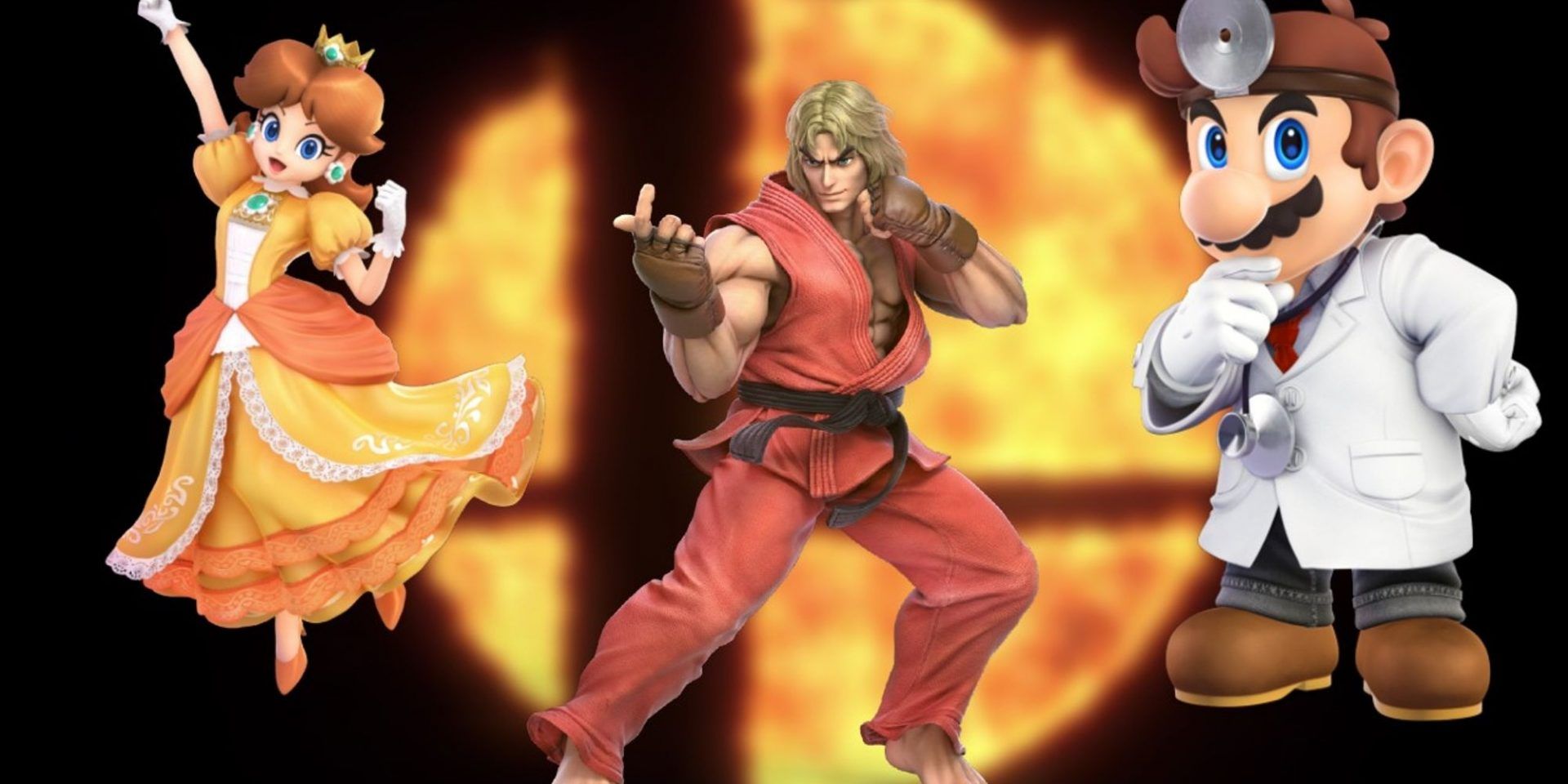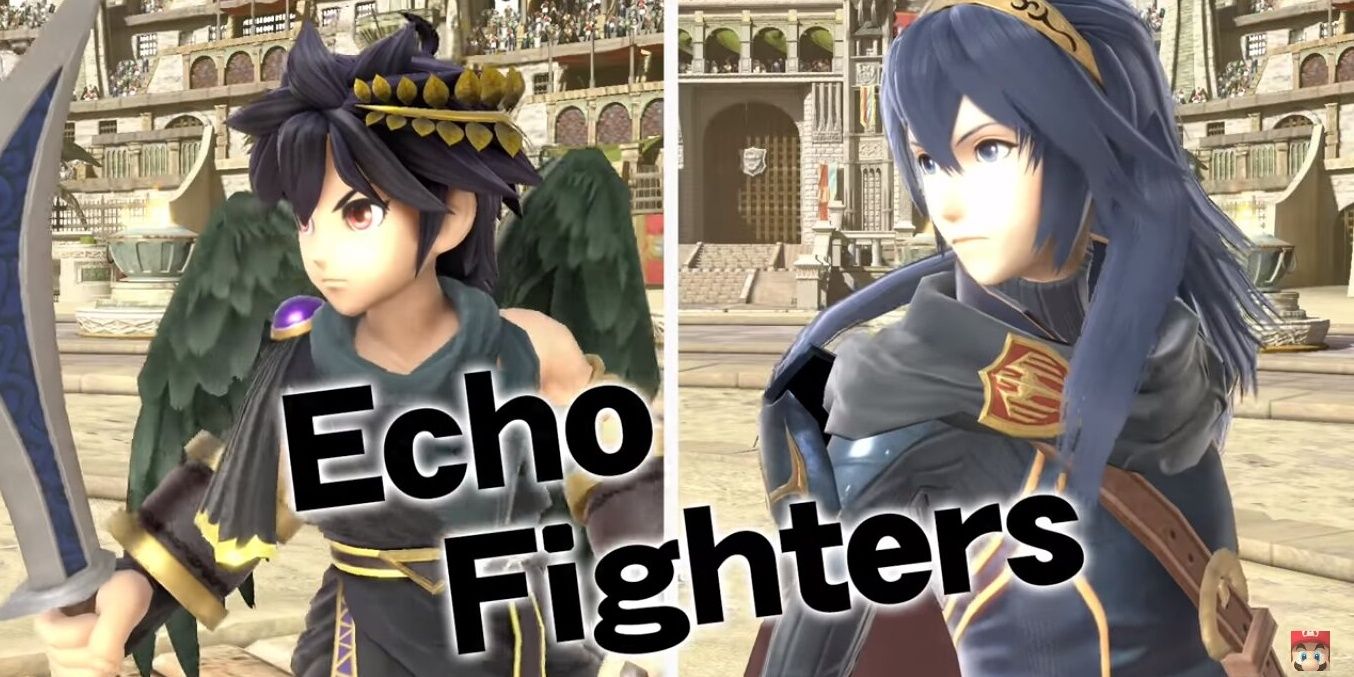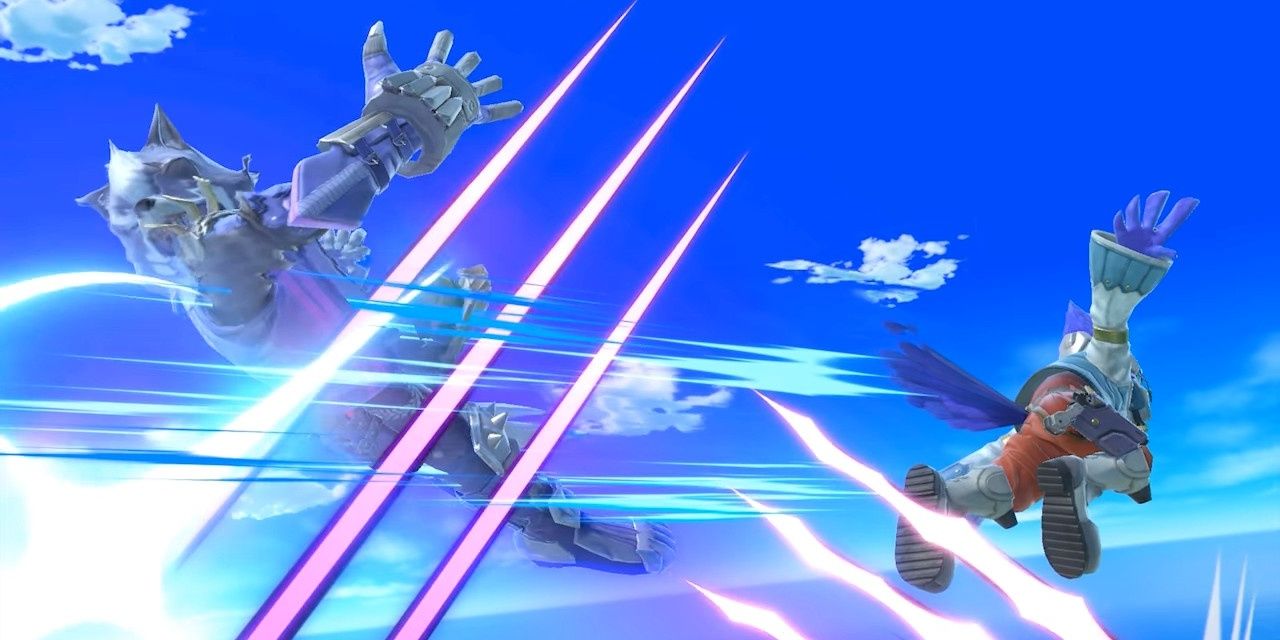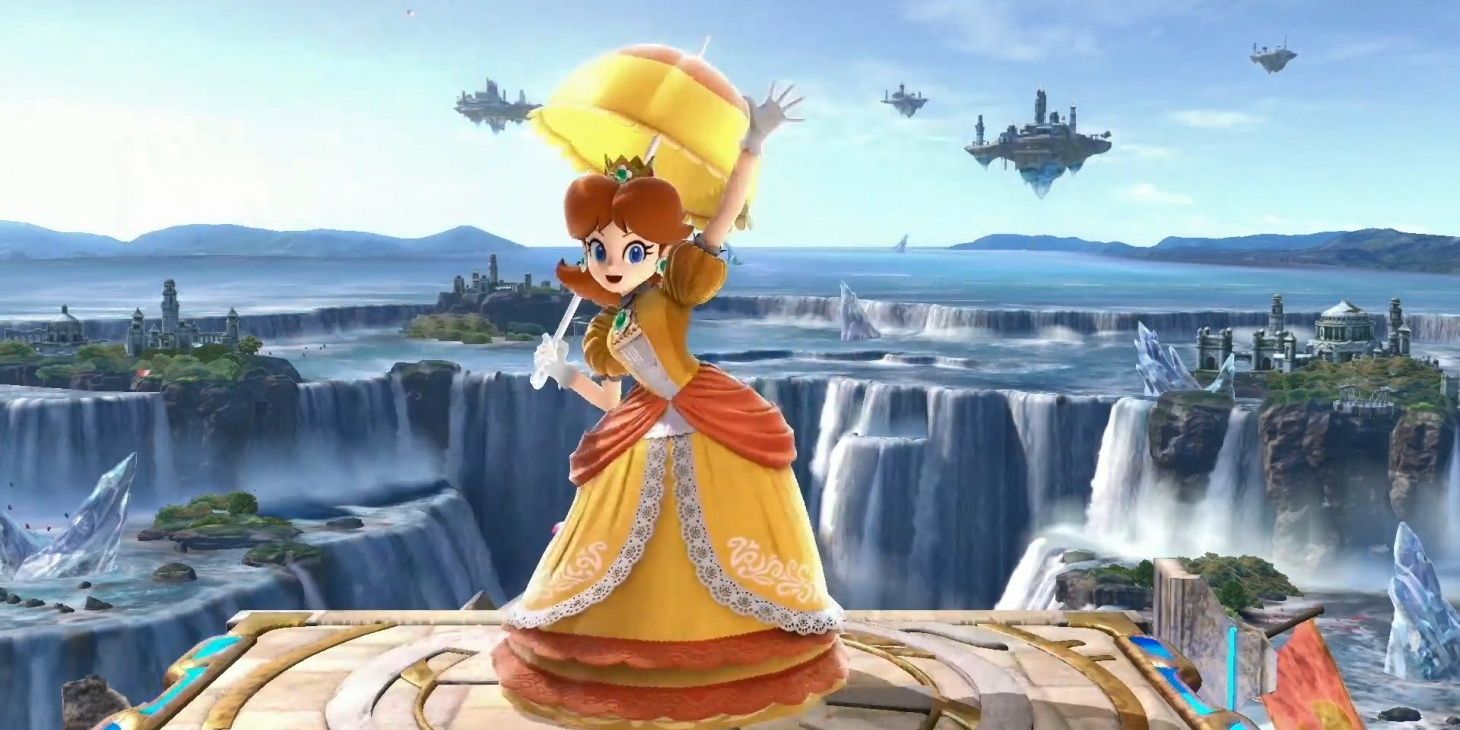You've probably noticed already, but the Super Smash Bros. series has a wide range of fighters. Despite needing to utilize them better, the sheer quantity of characters and franchises coming together is an accomplishment in itself. Among those characters are some that are treated a bit differently from others. As of Super Smash Bros. Ultimate, these fighters have officially been named Echo Fighters.
Echo Fighters are fighters that are based off of another fighter. These characters let Nintendo add extra content at low resource and development cost, since it's easier to reuse assets from an existing character and tweak them slightly than it is to make completely new movesets and animations. The poster characters for this new term were Lucina and Dark Pit, since they were based off of Marth and Pit, respectively.
Before Echo Fighters got their official name, the Smash community would refer to them as clones. This goes all the way back to the first Smash game on the Nintendo 64, when Luigi was essentially Mario with a straight fireball and a higher-pitched voice. Since then, clone characters began popping up as the roster expanded with each Smash game. The term 'clone' would be used to refer to characters like Dr. Mario, Roy, Pichu, Young Link, Lucas, and Wolf, who were clones of Mario, Marth, Pikachu, Link, Ness, and Fox, respectively.
The strange thing is that while some characters who once would've been labelled 'clones' were branded as Echo Fighters in Smash Ultimate, while others were not. This inconsistency has led a lot of the community to start scratching its collective head.
Some clear clones - like Ken and Chrom, who are clones of Ryu and Roy - have different moves and physical attribute changes in Smash Ultimate, but are still labelled Echo Fighters, but with others like Dr. Mario and Pichu, it's hard to justify not calling them Echo Fighters.
Ken and Chrom are Echo Fighters of Ryu and Roy since many of their moves are similar to each other. However, there are a few key differences, such as Chrom's Up-Special (or Up-B) and Ken's Back Throw being completely different. Even their similarities function differently. For example, Chrom and Roy share all other attacks, but Chrom has no sweet-spot on his sword. Many of Ken's similar moves are also multi-hit compared to Ryu's one-hit moves, most notably his Shoryuken. It's also worth noting that Ken was the only Echo Fighter that got a dedicated reveal trailer, albeit along with Incineroar.
Ken and Chrom's treatment brings into question the validity of other Echo Fighters. Look at Peach and Samus' Echo Fighters, Daisy and Dark Samus. There's little to no substantial differences between the two and the fighter they're based on, outside of some particle effects and animations. Same goes for Simon and his Echo Fighter Richter. There really is no point in using these Echo Fighters over their base characters, and kind of makes it seems like Nintendo is padding out the Ultimate roster. Really, the likes of Daisy and Dark Samus should be relegated to an alternate skin, like Alph is to Olimar or the Koopa Kids to Bowser Jr.
This further begs the question: what exactly is it that makes a character an Echo Fighter?
It's understandable why some clones didn't receive the term. Smash Ultimate changed up many moves for different fighters in order to make it feel like a new game. Falco and Wolf were clones of Fox in the past, but they've gotten different moves and property changes that made them feel completely different to play now. Link being updated to the 'Breath of The Wild' iteration separated his playstyle from that of Toon Link and Young Link. However, the same can't be said for other clones who didn't become Echo Fighters like Pichu, where its moves and playstyle are mostly identical to Pikachu's.
From a gameplay perspective, there's nothing significant to explain why some clones are considered unique characters. Some have different moves and properties that are pointed out in the Tips mode (such as Toon Link's Down Air), but the same can be said for some Echo Fighters. One of the key things that ties Echo Fighters with their inspired characters are their weight and jump height, since they're the same across the board. However, the likes of Lucas and Dr. Mario weigh the same as Mario and Ness, so that's clearly not the criteria.
All there is to really go off of is the word of Smash Bros. creator Masahiro Sakurai. In Vol. 563 of Sakurai's Famitsu Column, reported by siliconera.com, he responded to the confusion of another clone character, Isabelle, not being an Echo Fighter for Villager. His argument was that they didn't share the same body proportions or animations. But many clone characters do share those things with the fighter they're based on without being classified as Echo Fighters, such as Dr. Mario, Pichu, and the Links.
It just doesn't add up. The only redeeming thing is something Sakurai said in a later Famitsu column, translated and reported by nintendoeverything.com, but it's still not enough. When referring to Ken, he states "He’s different from Ryu in so many ways, one almost wonders whether or not we should even call him an Echo Fighter… Nope. I said he was, so he is." Despite his statements on Isabelle seeming like conditions had to be met, this remark makes Echo Fighters seem like a very baseless classification.
This isn't to say that the Echo Fighter term is necessarily a bad thing. When the Smash community used the word "clone" for many of the roster's characters, it was often said with a negative connotation behind it. This connotation came with the assumption that these clone characters were padding out the game and preventing more actual unique characters from appearing (despite Smash creator Masahiro Sakurai stating otherwise many times in the past). It wasn't until Smash Ultimate that all of that changed.
When Sakurai unveiled the term "Echo Fighters" the general viewpoint of these clone characters was essentially flipped on its head. Since the developers openly embraced the fact that some characters were based on existing ones, the community welcomed Echo Fighters with open arms. The reveal of Daisy as an Echo Fighter following the announcement also helped with fan recognition, since many people were happy to see her finally join the roster.
The Echo Fighter hype would continue as more of them got revealed. You would see the likes of long-awaited fighters like Chrom and Dark Samus join the roster. They were treated like a big deal as well, having their own sections in presentations leading up to the game's release. Despite being based off of another fighter, people were just happy to see them in the game. With this came the increased possibility that other long-awaited characters would join the battle as Echo Fighters, like Black Shadow to Captain Falcon, Dixie Kong to Diddy Kong, Shadow to Sonic, the list goes on.
That's not what happened though. The Echo Fighter label set expectations that the team simply didn't meet. It just brought more confusion, somewhat thanks to Sakurai's statements revolving around them. When the game finally released and people got their hands on the characters, it was even harder to see why some characters weren't considered Echo Fighters while others were.
The Echo Fighter term was a great way to make the public more accepting towards clone characters. However, the varied treatment between them and some clone fighters not being labeled as such made things very confusing for players. What ended up being an arbitrary term shows how much of a necessary evil the "clone" terminology was in the long run.




